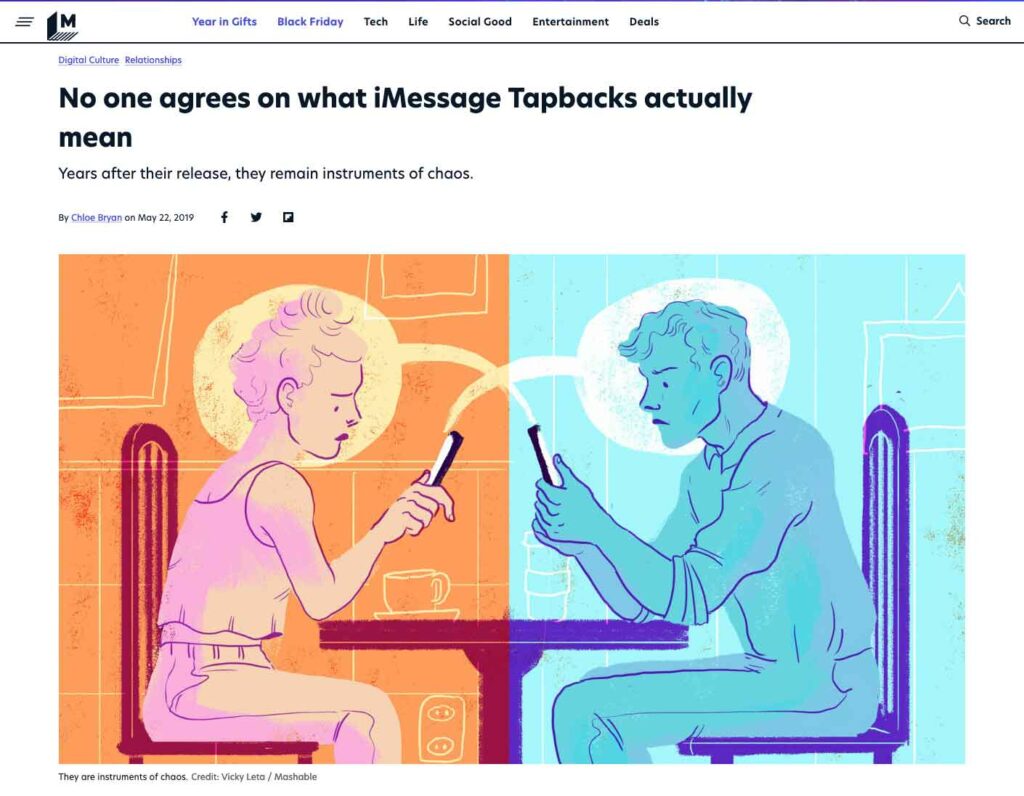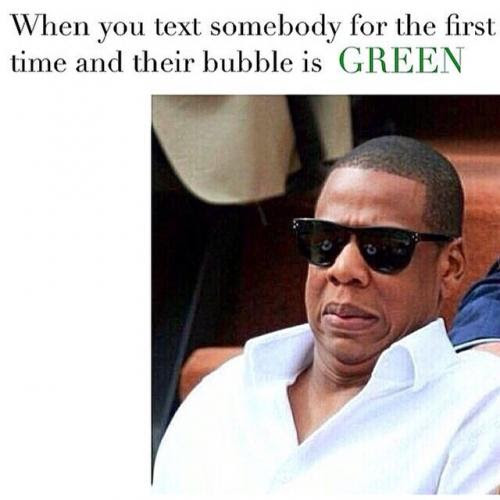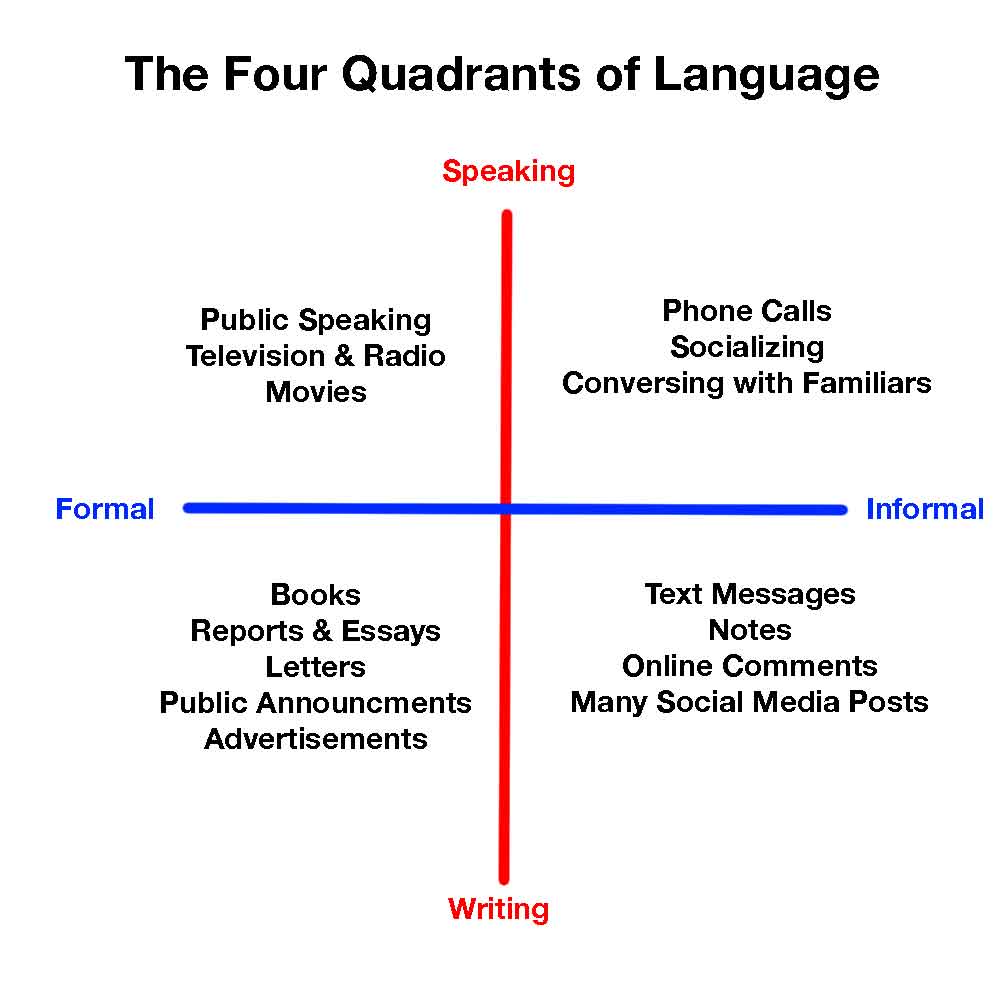Therapist Training Series:
The Private Text Lives of
True Digital Natives
Tracy Markle, MA, LPC &
Dr. Brett Kennedy, Psy.D.
This is part three of our therapist training series on true digital natives. The first people in history born into an established, online, social structure. Thanks to the internet and social media, the rituals and unspoken social rules around family, friendship, and dating are changing in their wake. As therapists, we have a lot of catching up to do if we are to serve them effectively.
Much has been written about the amount of time teenagers spend on social media, but little attention is paid to the app where they socialize most—iMessage. 87% of US teenagers have an iPhone and iMessage, the free texting capability between iPhone users, is where they return over and over again to discuss everything from the latest drama happening on social media to the big test on Friday. For today’s teens and tweens, text messaging is the modern equivalent of passing notes in school and group texts are the new cliques. It’s so crucial to their social lives that true digital natives have created their own etiquette, grammar, and vocabulary for texting. For adults to provide the support they need, we must better understand how teens and tweens communicate with one another in this digital space. Read on to learn.
Table of Contents
iMessage: The #1 Social Platform for US Teens
after first hand (sic) observing how teens use iMessage over the past few years it is clear that they treat it as much more than a basic text message delivery service. It’s the center of their mobile social life, whether they themselves realize that or not. Yes, they still spend hours on apps such as Instagram, Snapchat, Tumblr, or whatever else, but they constantly come back to their iMessage chats, whether it be 1v1 or group chats. They see someone posted about a party on their Insta or Snap story, they go back to their iMessage group chat and talk about it. They get 100 likes within an hour on their latest upload to Insta, they go back to their iMessage group chat and talk about it. They see that two or more of their friends are ‘live’ in their group chat — they sit there for an hour worried about missing out on whatever conversation is going on that made the chat ‘live’ to begin with. This is a very unique yet common, hyper active (sic) use case that just doesn’t exist on any other platform.
Reply with a quick response in iOS 10! Here’s how to use Tapback in Messages. pic.twitter.com/lx8tnUm1yH
— Apple Support (@AppleSupport) October 19, 2016
In addition to the tapback menu, Apple created an iMessage App Store accessible from the Messages drawer, the area just above the keyboard.
In the iMessage App Store, users can download stickers and interactive games they can play with their friends who are also on an iPhone.
Most adults have no idea these capabilities exist within iMessage. Apple has developed these products specifically to cultivate social value with teenagers and kids.
iPhones are so popular in the US, that young people who use Android phones are often teased when their green, Android, text bubble appears in a chat.
Group Texting: The New Clique
Many teens and tweens have multiple, ongoing, group text threads on their phones. One for each of the social groups to which they belong. For instance, a teen might have a group text with friends from school and another group text with friends that live in their neighborhood, another with friends from church, and one with friends they met at summer camp. Along with friend group texts, kids also have ongoing group texts with their immediate family, extended family, and more. Many iPhone users pin their favorite group texts to the top of the iPhone Messages app for easy access. True digital natives know exactly which group texts they have pinned at the top.
The ability to maintain ongoing text threads in seeming perpetuity is a function that true digital natives have come to expect from their social tools.
They enjoy the fact that they can easily scroll back to review past conversations. And many teens and tweens expect to maintain the text threads they’re participating in now through college and beyond. Which speaks to the level of attachment they have to the friends they communicate with through this medium.
Informal Writing: The Preferred Language of True Digital Natives
We have a sense, more or less, of how informal speech works. We have a long history of doing it, and it’s the primary thing that linguistics studies, much as literature and rhetoric study formal writing and formal speaking. But the combination of writing and informality has been neglected and this quadrant is precisely where internet writing excels.
Teen Texting Etiquette
If you’re trying to start a conversation with a teen or tween about their social life, ask them to explain texting etiquette, an endlessly fascinating topic. Like all language and culture, it varies slightly from location to location. And it reflects individual preferences. But here are some common themes to get you started that seem to apply to many US teens and tweens.
- Emojis are Largely Cringe – Emojis hit their peak in 2017 with the release of Emoji Movie and have declined in popularity with teenagers since. High school and college-age teenagers, especially girls and young women, mostly frown on emojis or see them as a way to communicate with older people. Younger teens and tweens still like them, and it remains to be seen whether they’ll outgrow them, too. But no true digital native uses emojis the way that older generations do. They use them ironically the way that previous generations went to “old man” bars ironically or wore handlebar mustaches ironically. Basically, they’re saying, look at this ridiculous convention of our elders. Isn’t it hilarious? Rest assured that however you use emojis, it makes teens and tweens roll their eyes. To be on the safe side, we recommend not using them when texting true digital natives or even when texting in the vicinity of true digital natives. Because if they see you sending kissy faces to your bestie on Facebook, they will judge you. In the below episode of the podcast “This Teenage Life”, the show’s Millennial producer learns how out of touch she is with the teens who work on the show because of her assumption that they love emojis as much as she does. During the conversation, the teens also explain the difference between emojis and tapbacks, a subtlety that’s lost on the Millennial.
- Memes and Animated Gifs are so Millennial – While many true digital natives think emojis are corny, they think memes and animated gifs are a clunky, inconvenient way to communicate during a texting session. As one 14-year-old put it, “Memes belong to the Millennials.” Today’s teens and tweens are unfazed by the internet, social media, and texting (they’ve had them their whole lives) so their biggest thrill when communicating is efficiency. Can they say what they want to say quickly and easily? Chances are it’ll be a hit with true digital natives.
- Punctuation is a Personality –True digital natives are such efficient communicators that they dispense with punctuation and grammar in all informal communications. They are so intimately acquainted with the text message format that they figured out the text bubble is a more logical (and efficient!) container for separating thoughts than the period. Which means periods have taken on a much more serious role. For true digital natives, if you end a statement in a text message with a period, you better mean it. One fourteen-year-old we spoke to said if someone texts him using proper punctuation he’d think they were a Christian. (As in goody two-shoes.)
- capitalization is uncool – For kids born into the most efficient communications era in human history, capitalization is just unnecessary baggage slowing them down. Plus, when texting is how you hang out, capitalizing is like wearing a pocket protector. Many kids even go so far as to disable the caps on their text keyboards so they never risk looking like they’re trying too hard.
- Email is Archaic – Today’s teens and tweens have come to expect the ease and functionality of mobile texting for their informal communications. In fact, many of them have never emailed a peer in their lives because they perceive email to be too “slow”. This has less to do with the speed of delivery and more to do with the interface. You can’t review your entire message history with someone in email as easily as you can in a texting app. For teens and tweens, this is a frustratingly inefficient way to organize communications. One that should only be used for the most formal of occasions, such as contacting a teacher or submitting homework. Maybe this generation will do away with email the way Millennials did with voicemail and phone calls.
Resources to Learn More
- iMessage, the Surprising Social Networking Platform for Teens – Net Nanny
- How iMessage became the world’s most important invisible social network – iMore
- Book: Because Internet – gretchenmcculloch.com
- Text Etiquette – This Teenage Life Podcast
- Tweens and Texting: Are Group Chats Trouble for Tweens? – Your Teen for Parents
- Why we don’t want you and your Android green bubbles in our iMessage chat – Fast Company
- It’s Kind of Cheesy Being Green: Apple is petty sometimes – The Message [Medium]
- Use Messages on your iPhone, iPad, or iPod touch – Apple
- When iPhones and Androids Chat: How to Live With Green Bubbles – Wall Street Journal [YouTube]
- Group texts are the new cliques for teens and tweens – Mashable
- When iPhones and Androids Chat: How to Live With Green Bubbles – Wall Street Journal – YouTube
1. Piper Sandler, Inc. (2021, October 5). Taking Stock With Teens® – Fall 2021. Pipersandler.Com. Retrieved November 4, 2021, from https://www.pipersandler.com/1col.aspx?id=6216
2. Statista. (2021, November 2). Most popular global mobile messaging apps 2021. https://www.statista.com/statistics/258749/most-popular-global-mobile-messenger-apps/
3. Stuto, G. (2017, August 10). Let’s face reality: US Teens engage with iMessage more than any other social platform. Hacker Noon. https://hackernoon.com/lets-face-reality-us-teens-may-engage-with-imessage-more-than-any-other-social-platform-f0c66cf6fc22






